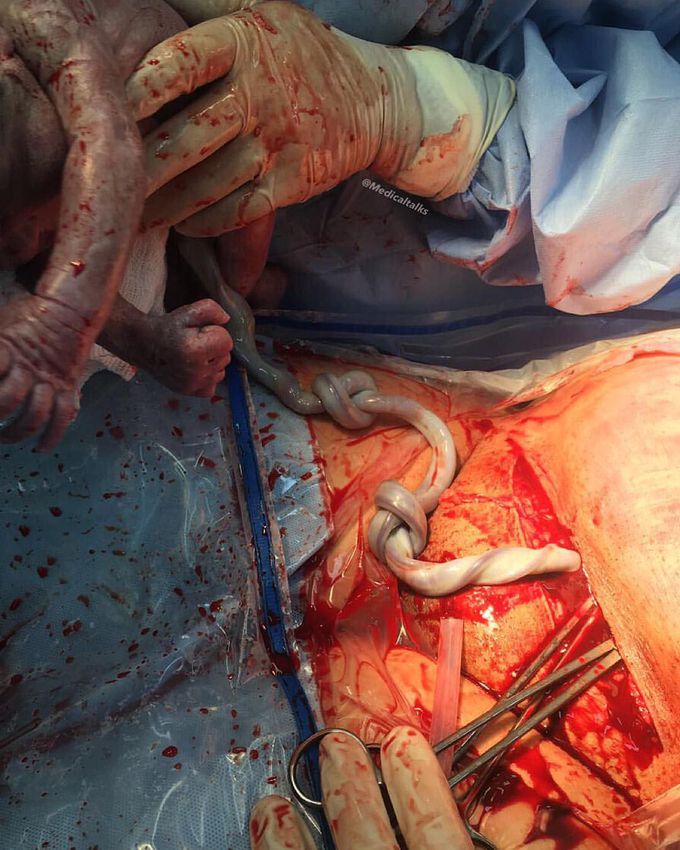


Two true umbilical cord knots!
Double the knot - double the trouble! A cord knot is exactly what the term sounds like — a knot in the baby's umbilical cord. True knot of the umbilical cord is a very rare condition and usually is noticed after delivery and does not lead to problems. It is relatively less common than the other umbilical cord anomalies. A normal umbilical cord contains two arteries and one vein. Wharton’s jelly is a special substance contained within the umbilical cord which serves to protect the vessels from trauma by acting as a cushion. A true umbilical knot develops when a fetus slips through a loop in the umbilical cord. The most common symptom of a true knot is reduced fetal activity after 37 weeks and intrauterine growth restriction. Cord knot itself is rarely a problem but an associated tightening leading to an umbilical cord knot is a concern where arterial compromise can cause severe complications such as hypoxic-ischemic encephalopathy. The main risk factors for a knot to develop are multiple pregnancy including twins, a long umbilical cord, fetuses that are small for their gestational age, polyhydramnios, and monozygotic twins. Diagnosis of a true knot includes routine ultrasound examination during pregnancy, color Doppler ultrasound, examination of the placenta and umbilical cord during delivery. Photo by @camila.w.leal
Hemodynamic stimuli&nonhemodynamic stimuliEffects of sugar on teeth


